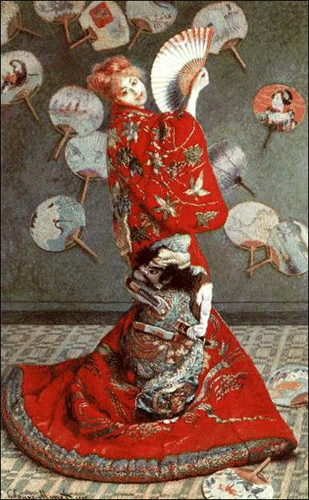Japonisme
Once Japan’s ports reopened to the West in the late 1800s, Europeans were exposed to ukiyo-e—not always as fine art, but also as packing material. Japanese woodblock prints of the floating world would be crumpled up to protect goods that were being shipped to Western nations, as the Europeans sought to obtain spices, fans, and kimonos from the Asian country.
The craze, known as Japonisme, also impacted Western artists such as Claude Monet, Vincent van Gogh, James Whistler, Mary Cassatt, and many others. They not only painted Japanese subject matter, but also began to utilize Japanese techniques. It is at this point that they started to create works of art from a bird’s-eye perspective (a viewpoint in which we see the scene from above looking down, like a bird). The impact of Japan had a long-lasting effect.


